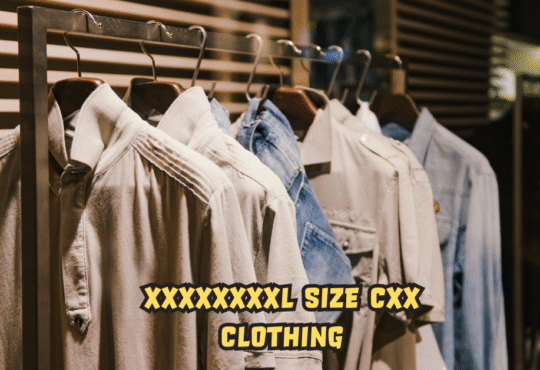
Embarking on the journey of fashion entrepreneurship, with aspirations of creating your clothing line, is a venture that marries creativity with business acumen. Innovation and meticulous planning are your guiding stars in this dynamic and competitive industry. Whether you’re a seasoned designer or a newcomer with a vision, the path to success is marked by distinct steps that demand dedication, precision, and an unwavering commitment to excellence. From defining your unique style to navigating legal intricacies, each facet of this endeavor plays a pivotal role in shaping the trajectory of your clothing brand. In the article that follows, you will delve into these key considerations, providing insights and strategies to empower your aspirations and create a compelling presence in the world of fashion.
Define Your Style and Niche
To embark on your journey of creating your clothing, it is imperative to establish a clear and distinctive style that sets your designs apart in the fashion landscape. Delve deep into fashion aesthetics, exploring various styles, from classic to avant-garde, and consider the elements that resonate with your vision. Furthermore, honing in on a niche market within the broader fashion industry is essential for targeting a specific audience with your creations. Whether it’s sustainable fashion, streetwear, or formal attire, identifying your niche will guide your design choices and brand identity, ultimately contributing to your success as a clothing designer.
Research Current Fashion Trends
Staying well-informed about the ever-evolving landscape of fashion trends is pivotal for anyone aspiring to create a clothing line. Dedicate substantial time and effort to immerse yourself in the dynamic world of fashion, regularly exploring a diverse array of sources such as fashion magazines, and digital platforms, and attending industry events. This continuous pursuit of trend knowledge will equip you with valuable insights into prevailing styles, emerging color palettes, and innovative materials. By comprehensively understanding the current fashion zeitgeist, you can infuse contemporary elements into your designs, ensuring they resonate with your target audience and remain relevant in the competitive market.
Develop Your Design Skills
The cultivation of proficient design skills stands as a fundamental pillar for those venturing into the realm of clothing creation. It is imperative to dedicate time and effort to the mastery of essential aspects such as garment construction, pattern making, and sewing techniques. You will be able to translate your creative concepts into real, well-made clothes if you have a thorough understanding of these fundamental elements. Pursue formal education, enroll in reputable online courses, or engage in self-study to enhance your design proficiency. This knowledge not only forms the basis of your craftsmanship but also ensures that your clothing items are characterized by precision, quality, and a keen eye for detail, setting the foundation for a successful venture in the fashion industry.
Create a Business Plan
Developing a meticulously crafted business plan is pivotal in transforming your clothing creation endeavor into a thriving enterprise. Within this framework, it is essential to articulate a clear and comprehensive vision for your brand, outlining your mission and long-term objectives. Additionally, meticulous financial planning is paramount, encompassing budget allocation, pricing strategies, and sales projections. By meticulously charting your path to sustainability, you not only gain a deeper understanding of your brand’s direction but also establish a solid foundation upon which to navigate the intricacies of the fashion industry, fostering growth and long-term success.
Source Quality Materials
Ensuring the excellence of your clothing creations hinges on carefully selecting high-grade materials. It is crucial to form alliances with recognized suppliers and producers who regularly offer first-rate fabrics, trimmings, and accessories. In this pursuit of excellence, consider the specific needs of your designs; whether it’s selecting luxurious silks for evening gowns, durable denim for casual wear, or embellishments like custom rhinestone transfers to add distinctive elements to your garments, the choice of materials plays a crucial role in defining the quality and character of your clothing line. By prioritizing the sourcing of premium materials, you not only uphold the integrity of your brand but also offer customers the assurance of a superior product.
Build an Online Presence
Establishing a robust online presence is an imperative facet of modern clothing entrepreneurship. It encompasses the development of a professional website that serves as the digital storefront for showcasing your clothing collections, complete with high-resolution images and compelling product descriptions. Additionally, active engagement across various social media platforms is vital for connecting with your target audience and fostering brand recognition. Consistent, meaningful content, including fashion tips, behind-the-scenes glimpses, and customer interactions, can enhance online visibility. Utilizing efficient search engine optimization (SEO) techniques helps to raise the search engine ranks of your website, ensuring that potential clients can reach your business with ease.
Test and Iterate
Before launching on a larger scale, it is essential to introduce your designs to a select audience or conduct a limited collection release. This allows for collecting invaluable feedback and examining sales data, facilitating data-driven decisions to refine your offerings. Customer preferences, market trends, and quality assessments should inform your adjustments, as the fashion landscape is continually evolving. Adapting and improving your designs based on these insights enhances your product’s appeal and solidifies your brand’s reputation for responsiveness and innovation, setting the stage for sustained success in the fashion industry.
Legitimate and Compliant Issues
This complex field demands meticulous attention to detail and observance of several rules. Begin by safeguarding your brand identity through trademark registration to protect against potential infringements. Understanding intellectual property rights and their implications ensures that your designs and branding elements remain secure. Moreover, adhering to labeling requirements, including care instructions and material composition, is essential for transparency and consumer safety. Compliance with safety standards for clothing, such as those related to flammability, chemical content, and sizing, is paramount to avoid legal complications. These comprehensive legal and compliance measures not only safeguard your brand but also foster trust and credibility among consumers, reinforcing your commitment to ethical and responsible business practices in the fashion industry.
Conclusion
From defining your style and staying attuned to trends to developing your design skills and crafting a robust business plan, these elements collectively form the blueprint for a successful venture. Sourcing quality materials, building a compelling online presence, and testing and iterating your designs reflect your commitment to excellence. Finally, by adhering to legal and compliance considerations, you safeguard your brand and reinforce your commitment to ethical and responsible practices.






